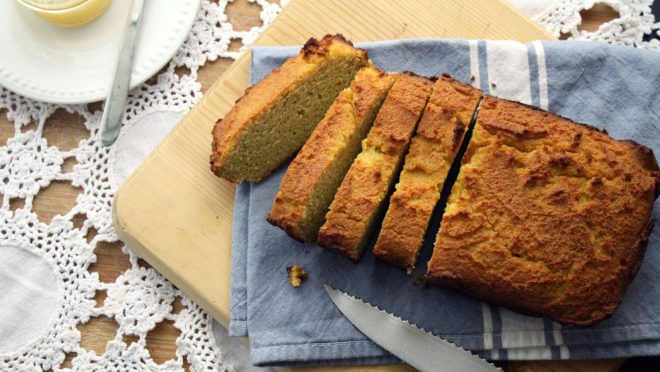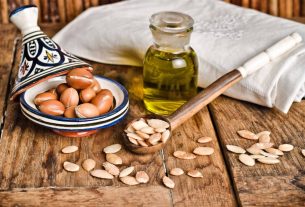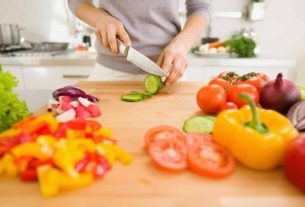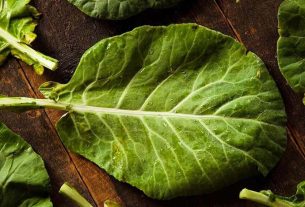There is a lot of talk about gluten in food and gluten-free eating, but, after all, do you know what exactly gluten is? Check out the main information about gluten-free foods below.
What are gluten free foods?
Gluten is a protein compound present in the seeds of cereals from the grass family, especially wheat, barley, triticale and rye. Gluten is essential for the germination and growth of the plant, but it can be very harmful when ingested by people who suffer from celiac disease, an illness that makes individuals intolerant or allergic to the substance. Gluten-free foods carry the term ”Gluten Free” on their labels. In other words, gluten-free foods are those that naturally do not contain the protein or have been processed to remove gluten or use gluten-free substitutes.
Can I eat gluten?
Most people do not experience health problems when eating gluten. However, some people have a protein intolerance, such as celiac disease or non-celiac gluten sensitivity, and need to avoid gluten in their diet.
Celiac disease is an autoimmune condition in which the immune system reacts negatively to gluten, causing damage to the lining of the small intestine. People with celiac disease should completely avoid gluten in their diet to prevent symptoms and damage to the intestine. Additionally, people with gluten sensitivity also experience symptoms similar to celiac disease, but do not experience the same damage to the small intestine. An alternative for these people is to avoid gluten in their diet to alleviate symptoms.
If you suspect you have a problem related to gluten, seek medical diagnosis and follow up with a nutritionist to understand which foods to eat and which ones should be replaced. This way, it is possible to prevent the body from losing nutrients that are essential for its proper functioning. Only a healthcare professional can request tests that detect gluten, such as anti-endomysium tests, to be carried out; tissue transglutaminase; gliadin and the molecular study of DQ2 and DQ8. These are blood tests that must be carried out during normal or light fasting, and the result will indicate the person’s sensitivity to foods, including gluten.
Also check out Gluten Free: guide brings together the main questions about the gluten-free diet
List of gluten-free foods
Foods that do not contain gluten have the term ”Gluten Free” on their labels. But, there are other foods that do not contain the substance gluten. Check out the list below:
- Fresh and frozen fruits;
- Fresh and frozen vegetables;
- Fresh meats (beef, chicken, fish, pork, lamb, etc.);
- Fresh fish and seafood;
- Eggs;
- Legumes (beans, lentils, chickpeas, etc.);
- Rice;
- Quinoa;
- Corn;
- Potato;
- Sweet potato;
- Almonds;
- Nuts (cashew nuts, Brazil nuts, etc.);
- Nuts (pecan, macadamia nut, nutmeg, etc.);
- Seeds (chia, flaxseed, sunflower, pumpkin, etc.);
- Almond milk, coconut milk and other gluten-free plant-based milks;
- Gluten-free natural yogurt;
- Gluten-free natural cheeses;
- Vegetable oils (olive oil, coconut oil, avocado oil, etc.);
- Honey and natural sugar.
However, be aware of cases of cross-contamination.
Gluten-free bread recipes
Gluten-free banana bread
Ingredients:
- 3 ripe bananas
- 3 eggs
- 1/4 cup coconut oil
- 1/2 cup almond flour
- 1/2 cup coconut flour
- 1 teaspoon of baking powder
- 1 teaspoon of cinnamon powder (optional)
- pinch of salt
Instructions:
- Preheat the oven to 180°C and grease a loaf tin.
- In a large bowl, mash the bananas until smooth.
- Add the eggs and coconut oil to the bowl and mix well.
- In another bowl, mix the almond flour, coconut flour, baking powder, cinnamon powder and salt.
- Add the dry ingredients to the banana mixture and mix until you get a uniform batter.
- Pour the batter into the prepared loaf pan and level the surface.
- Bake for approximately 45-50 minutes, or until a toothpick inserted into the center comes out clean.
- Remove from the oven and let cool before unmolding. Cut into slices and serve.
Gluten-free sweet potato bread
Ingredients:
- 2 cups mashed sweet potatoes (boiled and mashed)
- 4 eggs
- 1/4 cup olive oil
- 1/2 cup rice flour
- 1/2 cup sweet cassava starch
- 1 tablespoon baking powder
- 1 teaspoon of salt
Instructions:
- Preheat the oven to 180°C and grease a loaf tin.
- In a large bowl, combine the sweet potato puree, eggs and olive oil.
- In another bowl, combine the rice flour, sweet cassava starch, baking powder and salt.
- Add the dry ingredients to the sweet potato mixture and mix well until smooth.
- Pour the batter into the prepared loaf pan and level the surface.
- Bake for approximately 50-60 minutes, or until a toothpick inserted into the center comes out clean.
- Remove from the oven and let cool before unmolding. Cut into slices and serve.
Gluten-free quinoa bread
Ingredients:
- 1 1/2 cup quinoa flour
- 1/2 cup almond flour
- 1/4 cup sweet cassava starch
- 2 tablespoons ground flaxseed
- 1 tablespoon baking powder
- 1 teaspoon of salt
- 3 eggs
- 1/4 cup melted coconut oil
- 1/2 cup of water
Instructions:
- Preheat the oven to 180°C and grease a loaf tin.
- In a large bowl, mix the quinoa flour, almond flour, sweet cassava flour, ground linseed, baking powder and salt.
- In another bowl, lightly beat the eggs and add the melted coconut oil and water.
- Add the liquid ingredients to the flour mixture and mix until smooth.
- Pour the batter into the prepared loaf pan and level the surface.
- Bake for approximately 45-50 minutes, or until a toothpick inserted into the center comes out clean.
- Remove from the oven and let cool before unmolding. Cut into slices and serve.
How to cut gluten from your diet
Eliminating gluten from your diet when necessary requires commitment and can be challenging at first. However, over time, you will get used to the new way of eating and discover a variety of delicious and nutritious gluten-free options available.
To cut gluten from your diet, it is important to educate yourself about which foods contain gluten and which do not, and it is necessary to learn and read the labels.
Another alternative is to cook at home to gain control of the ingredients, being careful about cross-contamination. Furthermore, one way is to explore the delicious and nutritious gluten-free options available on the market.
Gluten-free flours
Check out the table below for some suggestions for gluten-free flours and how to replace them with traditional gluten-containing flours.
| Flours with Gluten | Gluten-Free Flours (Replace with one of these) | Where to replace? |
| Wheat | Rice | Breads, pasta, cakes |
| Rye | Corn | Cornbreads, tortillas |
| Barley | Quinoa | Cereals, soups, salads |
| spell | Almond | Pasta, cakes, cookies |
| Kamut Flour | Gluten-free oats | Cookies, porridge, granola |
Observation: In Brazil, oats may contain gluten due to cross-contamination. Make sure the oats you are going to consume are truly gluten-free.
Where to find gluten-free foods
It is possible to find several gluten-free products on specific shelves in large supermarket chains dedicated to celiac patients. Given that this is a growing market.
In this scenario, companies are increasingly investing in products for a gluten-free diet that comply with health organization legislation. This is the case of Tainá Alimentos, a distributor specialized in natural products, which has a range of products with more than 250 items including dried fruits, grains, flours, oilseeds, teas, seasonings and cereals, all gluten-free.
According to the Codex Alimentarius, a program of the Food and Agriculture Organization of the United Nations (FAO) and the World Health Organization (WHO), created in 1963, to be considered gluten-free a food can have a maximum of 20 ppm (parts per million) of gluten. Tainá Alimentos can guarantee that its products will not have more than 5 ppm, that is, well below the world average, a result resulting from the company’s high investment in technology.
Tainá Alimentos’ safety is guaranteed through tests certified by the AOAC (Association of Official Analytical Collaboration International) upon receipt of the raw material, in addition to carrying out constant tests in the handling rooms, which allows cross-contamination to be avoided.
All Tainá Alimentos employees also undergo constant tests to check hand hygiene, and receive periodic training on cleaning. The handling rooms and employees are checked at different times, so that professionals do not know when they will be tested. Furthermore, the storage process uses packaging suitable for the food, which is kept in a separate room, so that there is no contamination. All these processes were applied with the customer in mind. Therefore, he can be sure that, when he purchases a product from Tainá Alimentos, he can consume it without risk.
The company invests so much in feeding celiac patients that it created a 200g package, perfect for being consumed more quickly, avoiding waste.

Sign up for our newsletter and stay up to date with exclusive news
that can transform your routine!
Warning: Undefined array key "title" in /home/storelat/public_html/wp-content/plugins/link-whisper-premium/templates/frontend/related-posts.php on line 12
Warning: Undefined array key "title_tag" in /home/storelat/public_html/wp-content/plugins/link-whisper-premium/templates/frontend/related-posts.php on line 13




